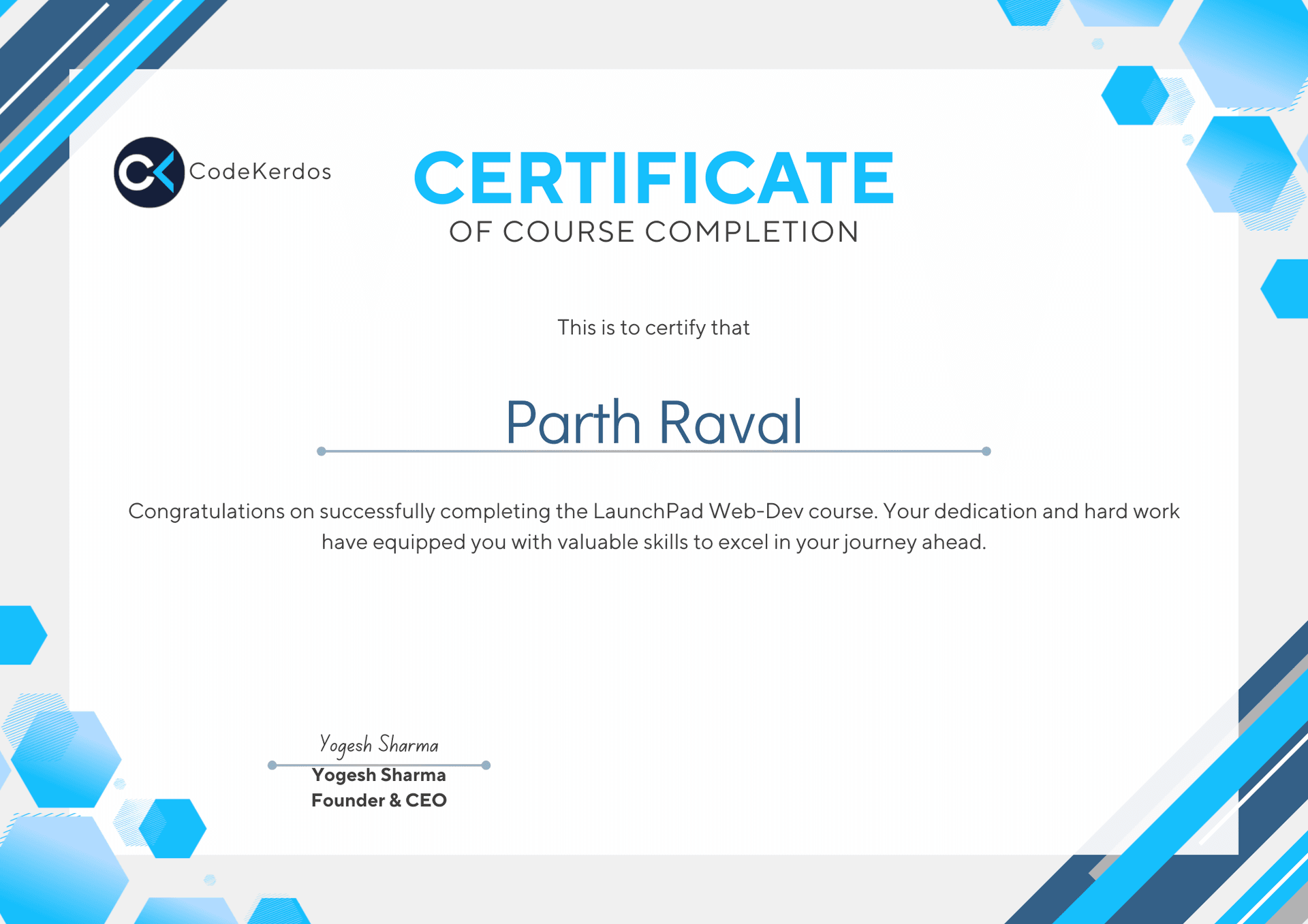Join LaunchPad Web Dev to master full-stack development from front to back! Learn ReactJS, Java, and backend frameworks like Node.js or Spring Boot, sharpen your DSA & System Design skills, and build industry-ready applications, all while integrating AI into real-world projects to stay ahead in the next wave of tech innovation.
Yogesh Sharma
Advance
Full-Stack Expertise
Strong Problem-Solving Skills
Portfolio Building
Job Readiness
Industry-Relevant Skills
Versatile Career Paths
Confidence to Innovate
Mentorship Support
Web Development
Enterprise Solutions
IT Services & Consulting
Data & System Design Roles
Software Engineering
Startups & Tech Companies
E-Commerce & SaaS
Freelancing & Remote Work
LaunchPad Web Dev is your gateway to becoming a complete full-stack developer. This comprehensive program takes you from the fundamentals of frontend and backend development to mastering advanced topics like Data Structures & Algorithms (DSA), System Design, and AI-powered application development.
You'll start with core programming in Java and frontend development with ReactJS, then dive into backend technologies — Node.js or Spring Boot — to build scalable, high-performance applications. You'll also learn how to integrate AI into your projects using APIs, NLP, and intelligent automation to create smarter, more user-friendly applications.
Along the way, you'll cover database management, API development, and modern deployment practices. Through hands-on projects, real-world AI-driven case studies, and expert mentorship, you'll develop the skills to build production-ready applications from scratch.
By the end of the course, you'll have a strong portfolio, interview-ready confidence, and the technical expertise to excel as a Full-Stack Developer, Software Engineer, AI-Integrated App Developer, or Backend Specialist in industries like tech, e-commerce, SaaS, enterprise IT, and startups.
With a structured curriculum, industry-relevant projects, and career-focused guidance, LaunchPad Web Dev is designed to make you job-ready and future-proof your career in the ever-evolving tech landscape — where AI is becoming the new standard.


When I joined the LaunchPad Web Development program at CodeKerdos, I wanted a structured way to learn full-stack development. The course covered everything from Frontend (HTML, CSS, JavaScript) to Backend (Node.js, ReactJS), along with Java, DSA, and System Design. What I liked most was that every stack had project-based learning, and even AI integration was introduced in web development projects, which made my skills stand out.
The mentors explained concepts in depth, guided me with real-world projects, and created a supportive learning environment. This program not only helped me master technical skills but also boosted my confidence for interviews and career growth.
At CodeKerdos, courses focus on real projects, ensuring your portfolio is both impressive and functional.
A simple CLI quiz game where users answer questions and get instant feedback — a fun way to learn basic JS logic.
A lightweight console app to manage daily tasks, add/delete items, and practice JS control structures.
A browser-based app using HTML, CSS, and JS to add, delete, and mark tasks as complete—perfect for learning DOM manipulation.
A weather app using OpenWeatherMap API, enriched with AI-generated outfit suggestions, activity tips, and alerts.
AI-powered recipe finder using a public recipe API + LangChain — users can ask natural language queries for personalized recipes.
A beginner-friendly Chrome extension project, covering manifest setup, background scripts, and UI integration.
Discover all the essential information about our courses in our detailed brochure. Get insights on curriculum, schedules, and enrollment options to help you make the best choice for your education.
Join LaunchPad Web Dev to master full-stack development from front to back! Learn ReactJS, Java, and backend frameworks like Node.js or Spring Boot, sharpen your DSA & System Design skills, and build industry-ready applications, all while integrating AI into real-world projects to stay ahead in the next wave of tech innovation.
Flexible monthly EMI plans available for up to 24 months.
Explore the various modes of payment available today: UPI for instant transfers, cards for secure transactions, wallets for convenience, and net banking for easy online management. Each option offers unique benefits to suit your needs.
Final pricing refers to the last and definitive cost of a product or service, including all applicable fees and discounts.
Includes: